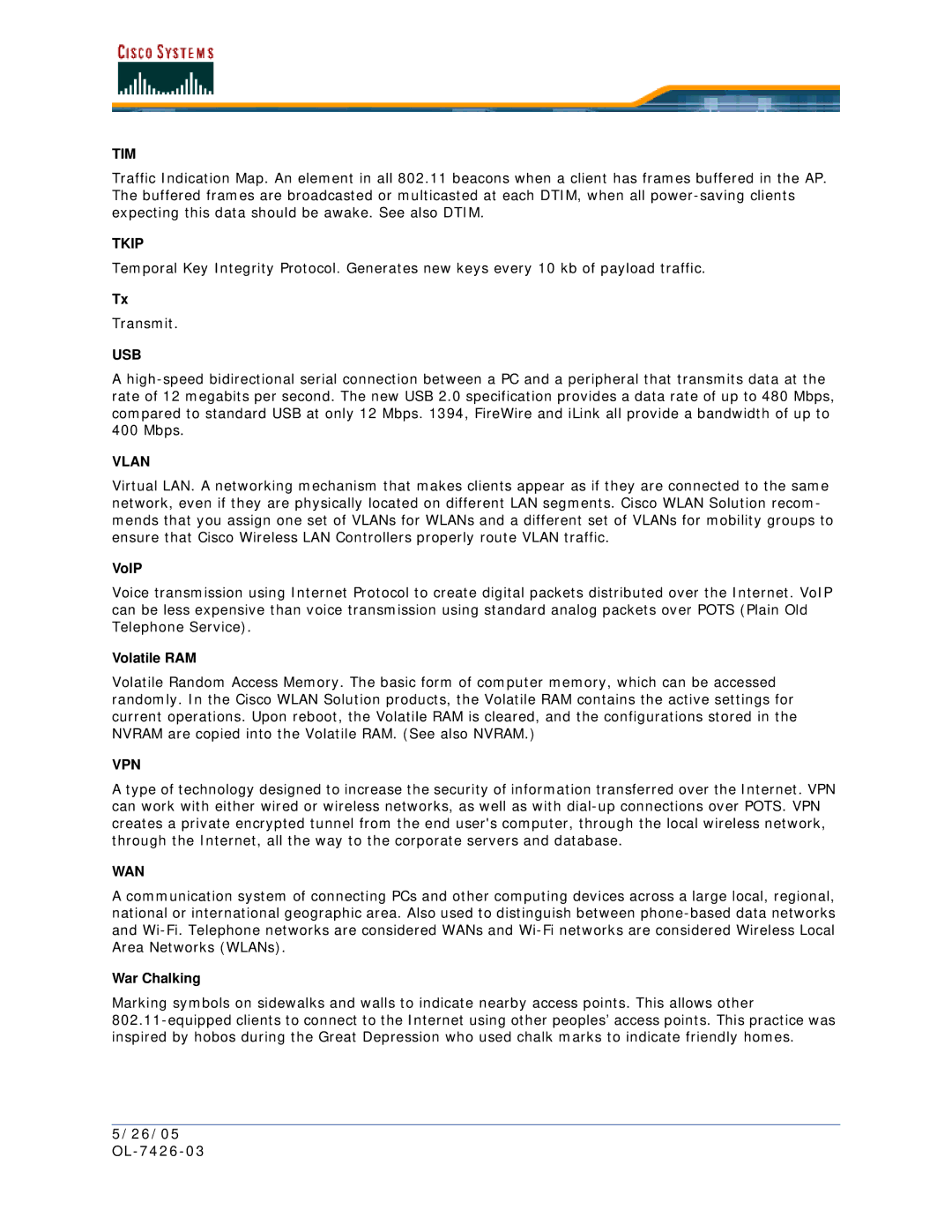
TIM
Traffic Indication Map. An element in all 802.11 beacons when a client has frames buffered in the AP. The buffered frames are broadcasted or multicasted at each DTIM, when all
TKIP
Temporal Key Integrity Protocol. Generates new keys every 10 kb of payload traffic.
Tx
Transmit.
USB
A
VLAN
Virtual LAN. A networking mechanism that makes clients appear as if they are connected to the same network, even if they are physically located on different LAN segments. Cisco WLAN Solution recom- mends that you assign one set of VLANs for WLANs and a different set of VLANs for mobility groups to ensure that Cisco Wireless LAN Controllers properly route VLAN traffic.
VoIP
Voice transmission using Internet Protocol to create digital packets distributed over the Internet. VoIP can be less expensive than voice transmission using standard analog packets over POTS (Plain Old Telephone Service).
Volatile RAM
Volatile Random Access Memory. The basic form of computer memory, which can be accessed randomly. In the Cisco WLAN Solution products, the Volatile RAM contains the active settings for current operations. Upon reboot, the Volatile RAM is cleared, and the configurations stored in the NVRAM are copied into the Volatile RAM. (See also NVRAM.)
VPN
A type of technology designed to increase the security of information transferred over the Internet. VPN can work with either wired or wireless networks, as well as with
WAN
A communication system of connecting PCs and other computing devices across a large local, regional, national or international geographic area. Also used to distinguish between
War Chalking
Marking symbols on sidewalks and walls to indicate nearby access points. This allows other
